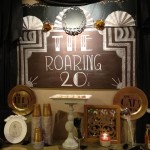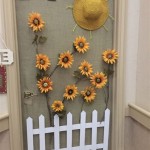```html
Nature-Inspired Living Room Decor: Bringing the Outdoors In
The incorporation of nature-inspired elements into interior design has gained significant traction in recent years. This approach, particularly in living room decor, seeks to emulate the tranquility and aesthetic appeal of the natural world within the confines of a domestic space. By strategically employing natural materials, color palettes, and design principles, individuals can cultivate a living room environment that promotes relaxation, well-being, and a connection to the outdoors. This article will explore key considerations in achieving a nature-inspired living room, focusing on materials, color palettes, and decorative elements.
Material Selection: Embracing Natural Textures
The selection of materials forms a cornerstone of nature-inspired decor. Prioritizing natural, sustainable, and minimally processed materials is crucial in creating an authentic and harmonious environment. These materials not only contribute to the aesthetic appeal but also offer tactile qualities that enhance the overall sensory experience of the living room.
Wood, in various forms, is an indispensable element. Untreated or lightly finished wood, showcasing its natural grain and texture, can be incorporated in furniture, flooring, and wall paneling. Reclaimed wood, with its inherent character and history, adds a unique and eco-conscious dimension. The specific type of wood can be chosen to complement the desired aesthetic; for instance, lighter woods like birch or maple evoke a Scandinavian-inspired, airy feel, while darker woods such as walnut or mahogany lend a more traditional and grounding ambiance.
Stone represents another fundamental material. Natural stone, such as granite, marble, or slate, can be incorporated as flooring, fireplace surrounds, or accent walls. The inherent variations in color and texture found in natural stone add depth and visual interest. River stones, arranged in decorative bowls or used as part of a water feature, introduce an element of organic beauty.
Natural fibers are essential for textiles and accessories. Linen, cotton, jute, and wool offer a range of textures and visual appeal. Linen curtains create a soft and diffused light, while jute rugs provide a durable and textured foundation. Wool blankets and throws add warmth and comfort, while also contributing to the overall tactile richness of the space. These materials are breathable, sustainable, and contribute to a healthy indoor environment.
Cork, a renewable and sustainable resource, is gaining popularity as a flooring and wall covering material. Cork is naturally sound-absorbing and provides a warm, comfortable surface underfoot. Its unique texture and natural variations contribute to a visually interesting and eco-friendly design.
Color Palette: Mimicking Nature's Hue
The color palette of a nature-inspired living room should reflect the tones and shades found in the natural world. Earthy tones, greens, blues, and neutral hues form the foundation of this aesthetic. The careful and strategic application of these colors can evoke specific environments and moods.
Greens are synonymous with nature and can be incorporated in various shades, from deep forest greens to soft sage greens. These colors bring a sense of tranquility and connection to the outdoors. Green can be used as an accent color in cushions, throws, artwork, or as the primary color on walls. Incorporating live plants further enhances the presence of green within the space.
Blues, reminiscent of the sky and water, can introduce a sense of calm and serenity. Soft, muted blues, such as seafoam or sky blue, are particularly effective in creating a relaxing atmosphere. Deeper blues, such as navy or indigo, can provide a grounding contrast and add depth to the color palette. Blue can be incorporated in upholstery, rugs, or artwork.
Earthy tones, including browns, beiges, and creams, provide a neutral and grounding foundation. These colors evoke the feeling of soil, sand, and stone. They can be used as the primary color on walls, flooring, or furniture. Combining different shades of earthy tones creates a layered and textured effect.
Accents of warmer colors, such as yellows, oranges, and reds, can be used sparingly to add pops of energy and vibrancy. These colors can be inspired by sunsets, flowers, or autumnal foliage. They should be used strategically to avoid overwhelming the overall calming effect of the nature-inspired palette. These accents can be introduced via cushions, artwork or small decorative items.
It’s important to consider the natural lighting within the living room when selecting a color palette. Colors will appear differently depending on the amount and type of light they receive. Lighter colors can brighten a darker room, while darker colors can add warmth and depth to a brighter space. Natural light will enhance the true color of natural materials, making the room feel more alive and connected to the outdoors.
Decorative Elements: Integrating Natural Forms
Decorative elements play a crucial role in completing the nature-inspired living room. These elements should be carefully selected to complement the overall aesthetic and reinforce the connection to the natural world. Prioritizing organic shapes, natural textures, and elements that evoke specific natural environments is paramount.
Live plants are perhaps the most important decorative element. They not only add visual appeal but also improve air quality and create a sense of vitality. A variety of plants, in different shapes and sizes, can be incorporated, ranging from small succulents to large potted trees. Consider the amount of sunlight the living room receives when selecting plants. A vertical garden is an option for adding greenery to a smaller space or a room with limited floor space. The use of natural fiber pots or woven baskets to house plants can further enhance the natural aesthetic.
Natural artwork, such as landscape paintings, botanical prints, or nature photography, can evoke a sense of place and connection to the outdoors. Choose artwork that complements the color palette and overall aesthetic of the living room. Consider incorporating framed leaves, pressed flowers, or other natural elements into the artwork.
Natural light is a crucial decorative element. Maximize natural light by using sheer curtains or leaving windows uncovered whenever possible. Mirrors can be strategically placed to reflect light and create a sense of spaciousness. Artificial lighting should be soft and warm, mimicking the glow of natural light. Consider using lamps with natural fiber shades.
Natural textures, such as woven baskets, driftwood sculptures, or sea shells, can add visual interest and tactile appeal. These elements evoke specific natural environments and can serve as conversation starters. Arrange these elements in vignettes on shelves, coffee tables, or mantels.
Water features, such as small fountains or aquariums, can introduce a calming and soothing element. The sound of water can be particularly relaxing and can mask unwanted noise. If an aquarium is chosen, ensure that it is ethically sourced and properly maintained.
Stones and crystals can be incorporated for both aesthetic and purported energetic benefits. Arrange stones in decorative bowls, display crystals on shelves, or use them as paperweights. Choose stones and crystals that complement the color palette and overall aesthetic of the living room.
Branches and dried flowers can add a touch of rustic charm. Arrange branches in vases or use them to create wall art. Dried flowers can be displayed in bouquets or used to embellish wreaths or garlands. These elements add texture and visual interest, while also bringing a touch of the outdoors in.
The successful integration of these considerations – material selection, color palette, and decorative elements – facilitates the creation of a nature-inspired living room that promotes well-being and provides a tranquil retreat from the demands of daily life. The deliberate and thoughtful application of natural principles in design can transform a living space into a sanctuary connected to the earth.
```
Nature Inspired Home Décor 8 Sustainable Ideas Fossil Blu

9 Natural Decor Ideas For An Outdoor Inspired Home Decorilla

Decorating With Natural Elements Materials Flooring America

Nature Inspired Design Ideas That Go Beyond Indoor Plants Designcafe

Nature Inspired Home Decor Ideas Spacejoy

9 Nature Inspired Decorating Ideas Town Country Living

Thrifty And Chic Diy Projects Home Decor

Nature Inspired Living Room Blends Contemporary Rustic Elements Melanie Millner

Nature Inspired Decor Ideas Design Improvised

How To Incorporate Natural Decor Into Your Home Decorilla
Related Posts







